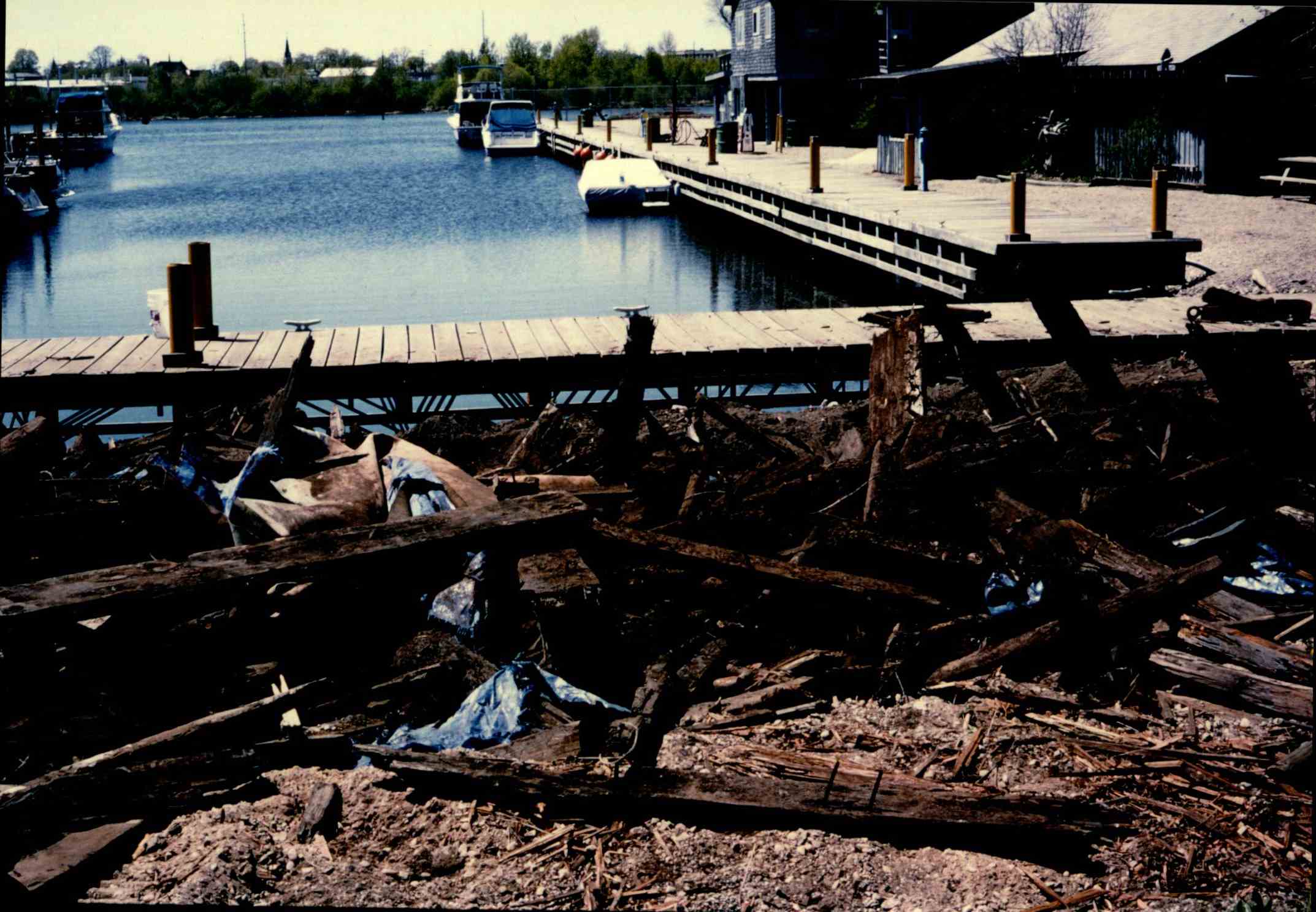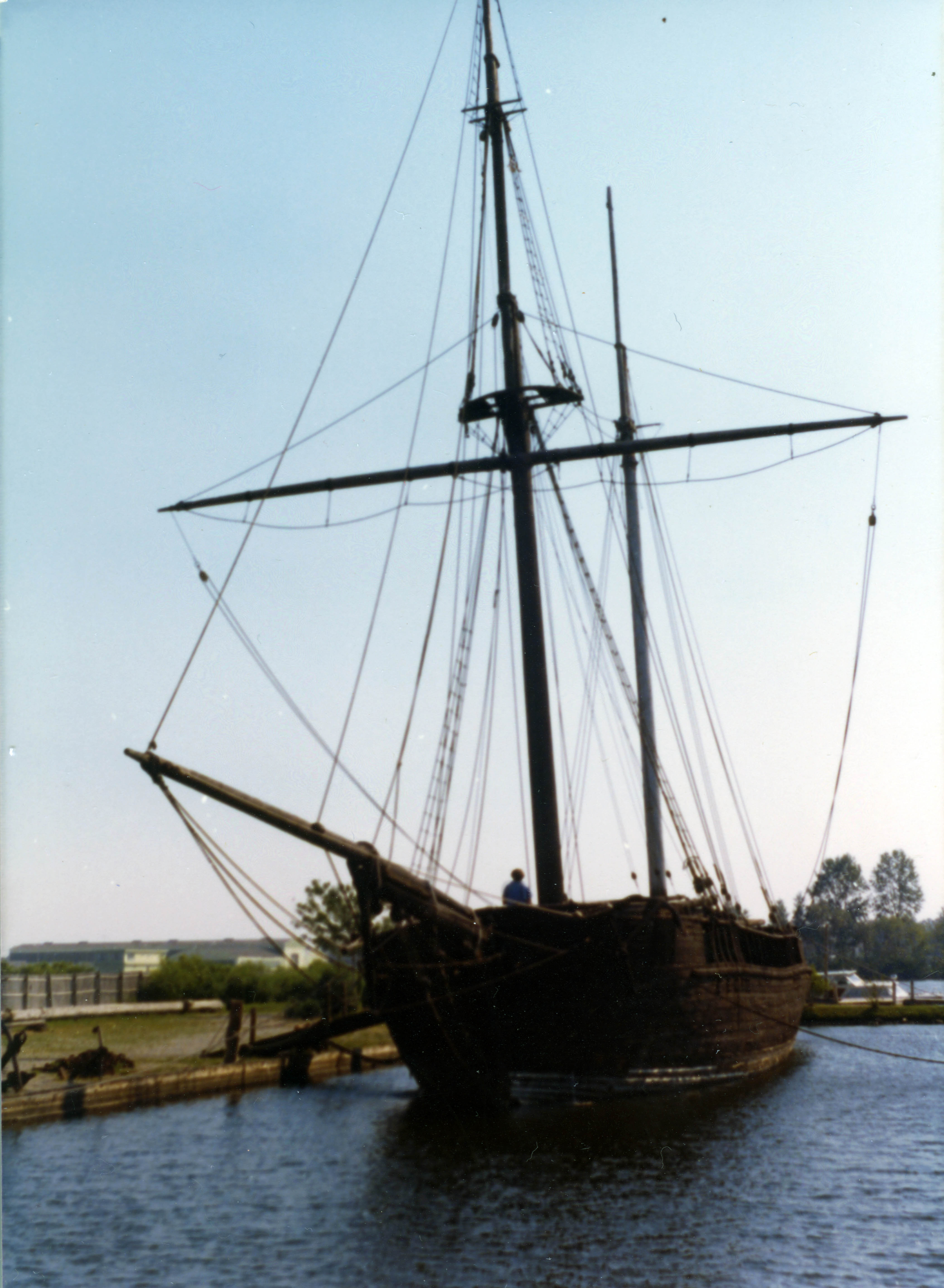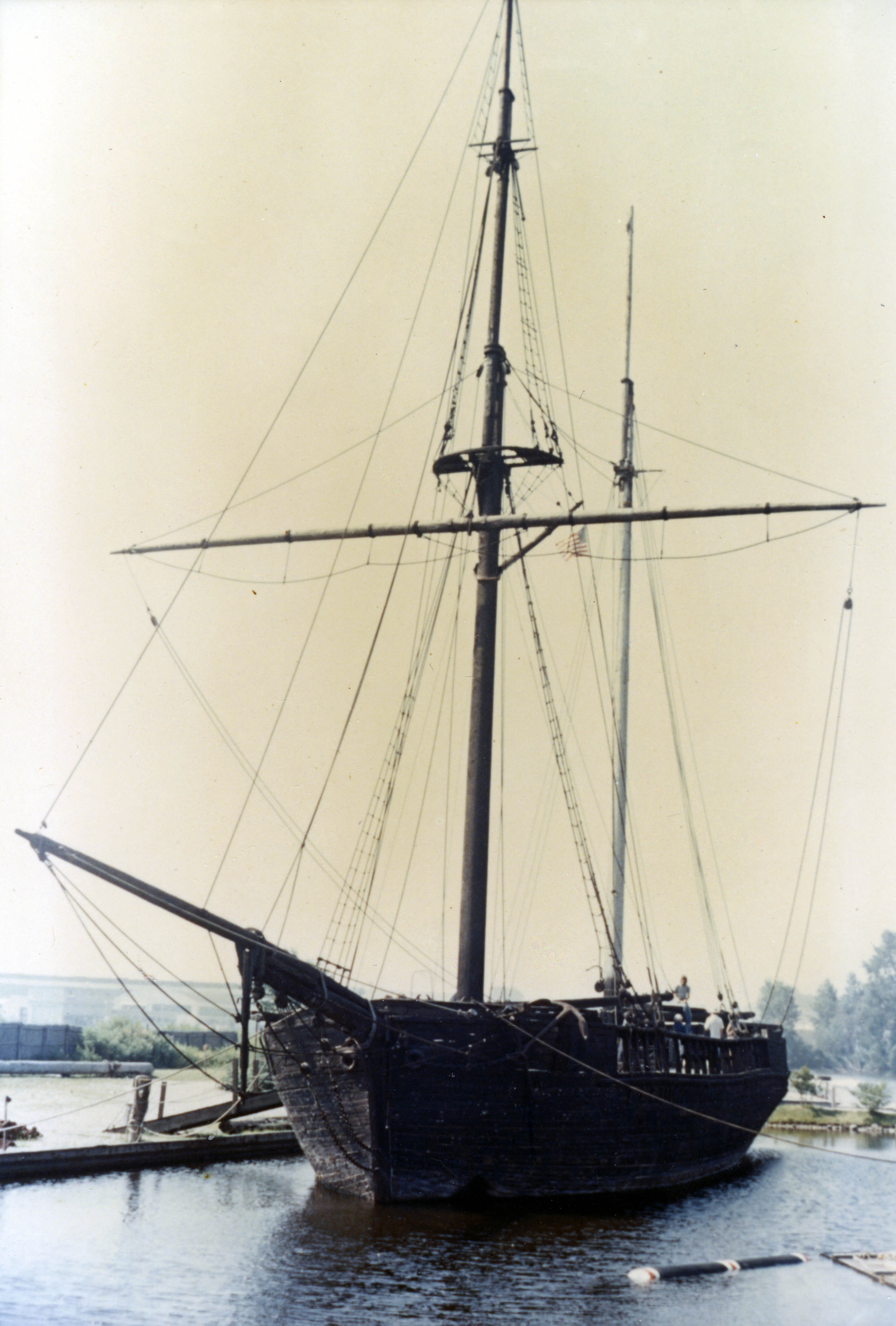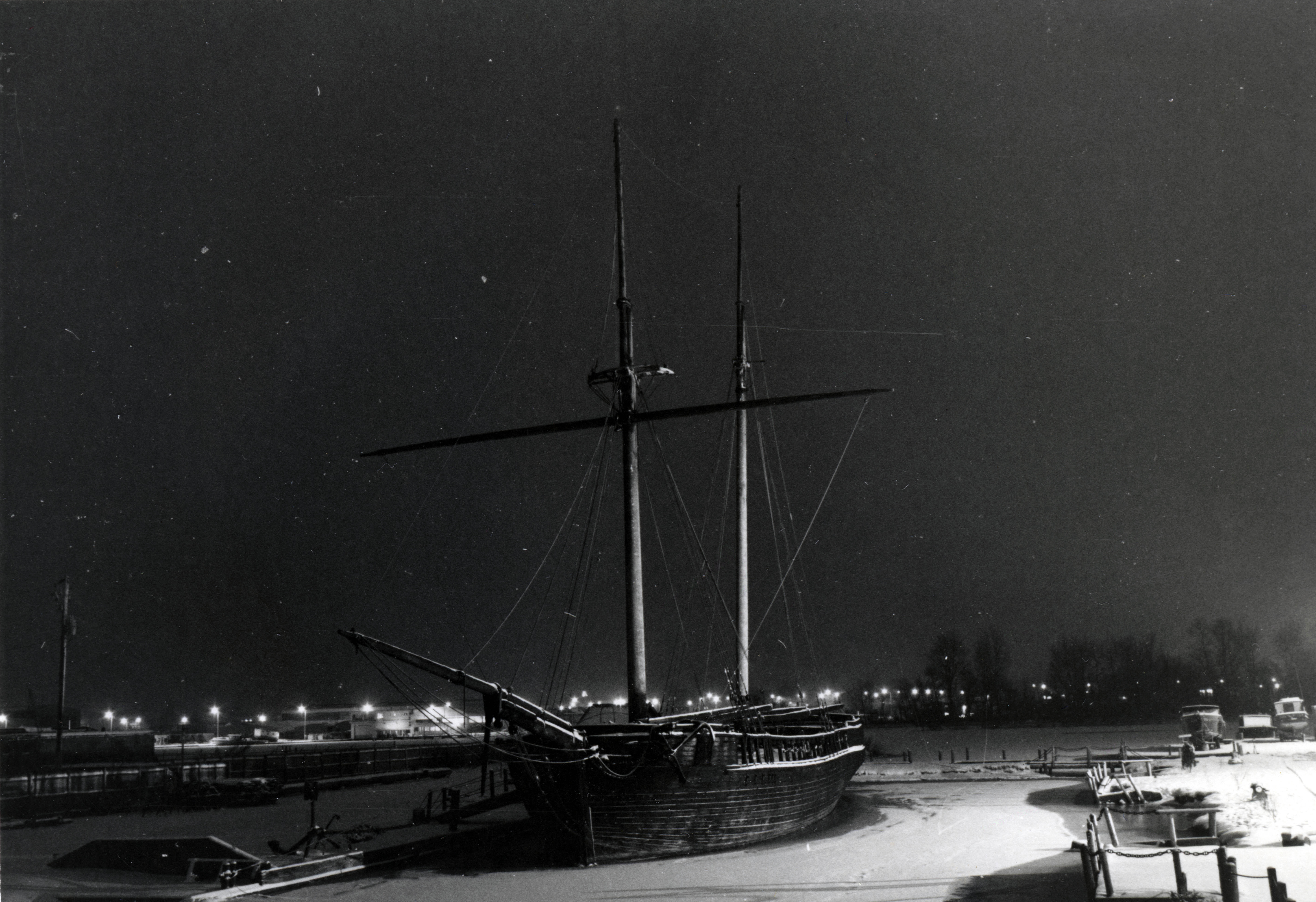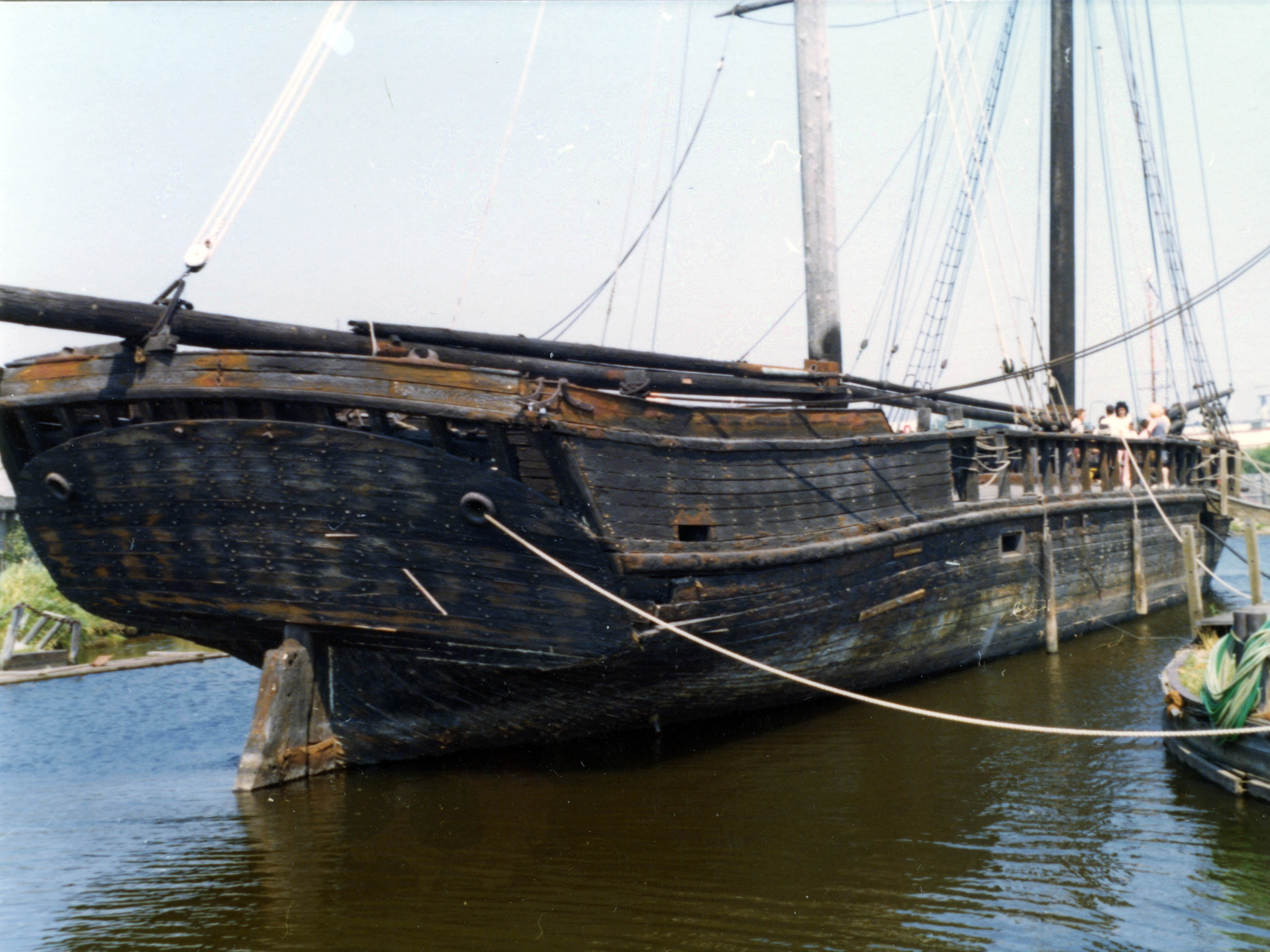Service History
The
Alvin Clark was a 220-ton brigantine built for the Great Lakes cargo trade, specifically to carry salt from Buffalo and Oswego, New York. Port entry logs also saw it carrying grain, coal, rough-rawn lumber, and preserved fish. Contemporary accounts report the
Alvin Clark as capable of carrying loads up to two-and-a-half times its own gross weight. It was built at Trenton, Michigan between 1846 and 1847 by Captain Bates for Detroit-based fisherman John Pearson Clark. Clark named the vessel for his son, Alvin.
The
Alvin Clark was sold to G.W. Bissell of Detroit only a year later, who sold it again in 1856 to William Higgie of Racine, Wisconsin. Under Higgie's ownership, the brig underwent large repairs and was used to carry lumber to Chicago. The Higgie family was known to be involved in the illicit lumber trade. They would remove wood from public lands without proper payment to the federal government; it is alleged that the
Alvin Clark was used to haul this illicit timber.
Final Voyage
In 1864, the
Alvin Clark was bound for Oconto, Wisconsin to load lumber for Chicago, when it was caught in a squall and capsized off of Chambers Island in Green Bay. The
Green Bay Advocate reported on July 7: "We learn from Captain Dingman of the Steamer
Sarah Van Eps that the topsail schooner
Alvin Clark capsized in a gale about 5 o'clock P.M. Wednesday, 29th off Chambers Island, and her captain, mate and one of her crew were drowned. We do not learn their names. She was owned by Mr. Higgie of Racine, who formerly commanded her, but our informant does not know whether he sails her this season or not. She was on her way to Oconto, light, for a cargo of lumber. The balance of the crew were picked up by a brig, name unknown."
The
Milwaukee Sentinel similarly reported on the wreck on July 8: ""Capsizing of the
Alvin Clark - The Schooner
Alvin Clark was capsized on Green Bay, near Chambers Island, in a squall which occurred about a week ago Saturday. Capt. Durnin and the mate, John Dunn, were both drowned. Capt. Durnin leaves a family in Racine. We understand also, that the mate was a married man and that his family live on the north side of the river."
Shortly following the demise of the
Alvin Clark, there was an attempt to raise and salvage it. The work was unsuccessful, however, and the wreck lay at the bottom of the lake in approximately 20 fathoms, or 120 feet, of water.
Today
The remains of the
Alvin Clark were rediscovered in November of 1967 by diver Frank Hoffman, after he was asked by local fisherman to recover a fouled net. Hoffman and a team of volunteer divers excavated and raised the
Alvin Clark from the bottom of Lake Michigan by 1969. When it reached the surface, the
Alvin Clark gained national press, and was dubbed "The Mystery Ship from 19 Fathoms." It was floated into nearby Marinette, Wisconsin, where it was cleaned and rerigged. In June of 1970, the ship opened as a tourist attraction along the Menominee River with a small museum nearby.
In 1980, the U.S. Coast Guard recognized the ship as the oldest documented floating vessel; discussions resurfaced about restoring the ship and sailing it around the Great Lakes. After years of financial problems, however, Hoffman sold the
Alvin Clark and the surrounding property to the developer of a local marina, the Diversified Investors Group, in 1987. The developer raised and placed the brig on a bed of gravel. Without proper funding to conserve the ship, the ship and the artifacts it contained began to deteriorate. In late 1993, DIG officials removed the vessel to clear room for a marina parking lot. A year later, in mid-June of 1994, the
Alvin Clark was hauled to a landfill. According to recent visitors to the site, all that now remains of the
Alvin Clark are some timbers, an anchor, windlass, and items in the now-defunct museum.
